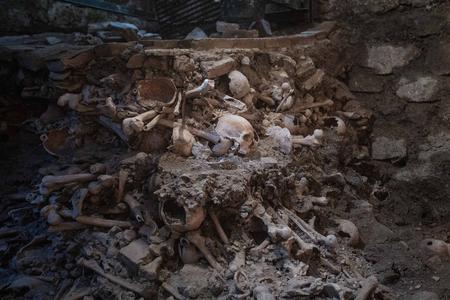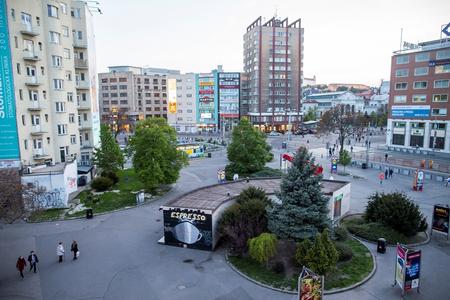Every day, thousands of people cross Velvet Revolution Square – part of Bratislava’s SNP Square – unaware that beneath the cobblestones lie the remains of an 11th-century church and a rare ossuary.
Just steps from the landmark Manderlák building, Slovakia’s first skyscraper, archaeologists have uncovered the remnants of St James’s Chapel and its subterranean bone chamber. Unearthed by accident in 1994, it is believed to be the only preserved ossuary in the city. Its most striking feature: a long wall lined with hundreds of human skulls.
The site may soon welcome visitors. As part of Bratislava’s Živé Námestie (Lively Squares) renovation project – which aims to pedestrianise SNP Square, Velvet Revolution Square and Kamenné Námestie – the ossuary is to be restored and opened to the public. Construction is scheduled to begin in late 2025.
“For years we have been asking for funding and urging city leaders to make the site accessible,” Petra Šimončičová-Koóšová of the City Institute for the Protection of Monuments (MÚOP) told Sme in 2024.
From cemetery to chapel to ossuary
The ossuary dates back to medieval Pressburg (Bratislava). In the 12th century, a rotunda chapel stood amid a cemetery outside the city walls. By the early 13th century, this had been replaced by the larger Romanesque St Lawrence’s parish church and an underground chapel dedicated to St James.
Coins and inscriptions suggest the ossuary was built in the early 1200s. Over time, the bones of hundreds of burghers – men, women, children and even infants – were transferred here to free up burial space. The remains were stacked in neat rows of long bones and skulls, forming the macabre wall still visible today.
Visitors descend a short ladder to face this wall of empty eye sockets. Along the observation gangway, a dozen cardboard boxes hide excavated skulls beneath sheets of paper – a temporary storage until reburial, Šimončičová-Koóšová said.
Above and below
Today, Velvet Revolution Square is a lively meeting place, with bars, restaurants, a fountain, summer chess tables, and occasional food and art events. Few realise they are walking over centuries of human history.
Local historians argue the city owes it to its predecessors to acknowledge their presence. Once opened, the ossuary could become one of Bratislava’s most powerful – if unsettling – cultural attractions.
War, demolition, and survival
St James’s Chapel met its end in 1529, when Ottoman forces advanced on Vienna. To deny the invaders cover, Pressburg officials demolished all substantial buildings outside the walls, including St Lawrence’s Church and the chapel. The ossuary beneath was left intact.
That same year, Vienna was besieged from the south, and Pressburg became a safe haven and, by 1536, the capital of “Royal Hungary” under Habsburg rule – a status it held until the late 18th century.
After the 20th-century name change to Bratislava, the city became part of Czechoslovakia and later, in 1993, capital of independent Slovakia. The ossuary’s rediscovery the following year provided a rare physical link between the city’s medieval past and its modern identity.
A ‘fine bridge to the past’
The Metropolitan Institute of Bratislava’s winning redesign for the square, by Berlin-based Atelier Loidl with BPR, will turn Velvet Revolution Square into an “archaeological topography” showcasing the ossuary. The plan calls for a protective pavilion and a slim metal staircase offering a “non-invasive” descent – “like a fine bridge to the past,” as the designers put it.
Alternative proposals included a bold sunken plaza by Slovenian firm Sadar+Vuga, which critics feared would overshadow the historical site.
According to project manager Michal Oborný from the Bratislava Magistrate’s Office, archaeological review and permitting will precede construction of the pavilion, with completion expected between 2027 and 2028.
Once finished, visitors will stand among the stripped skulls and silent bones – a reminder that these people once lived, worked, and dreamed in the same streets above.











